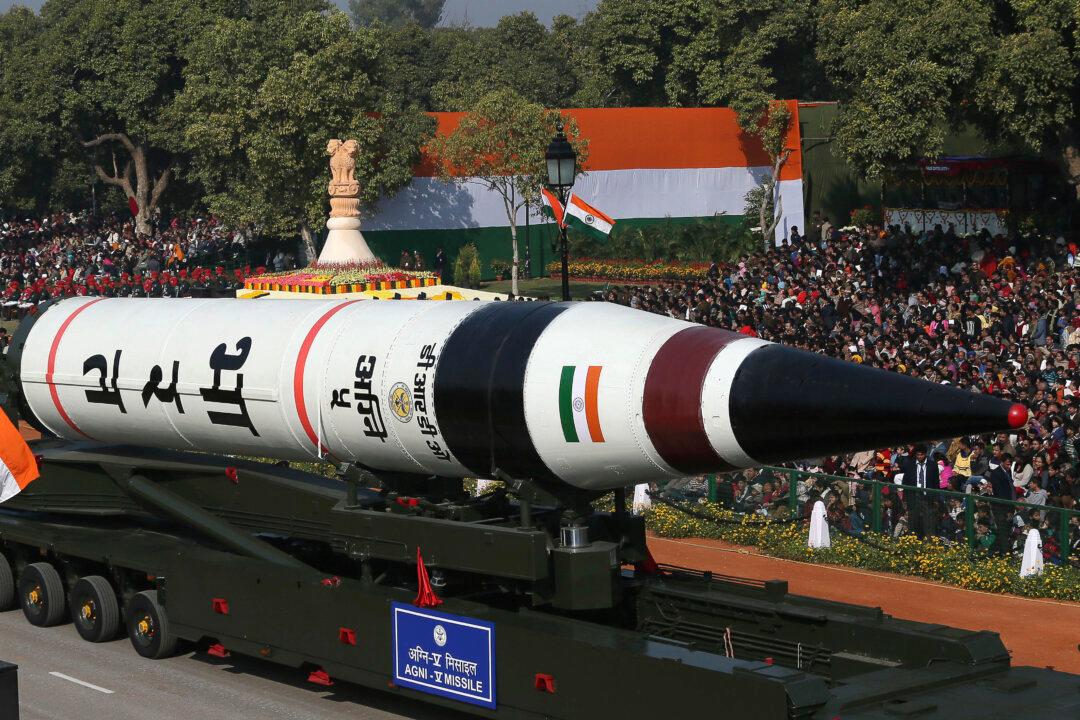India on Thursday carried out a test launch of a long-range nuclear-capable ballistic missile, Agni-5, which came days after a renewed clash between Indian and Chinese troops along the disputed Himalayan border.
Indian Parliamentary Affairs Minister Pralhad Joshi said the successful launch of Agni-5 from Abdul Kalam Island in eastern Odisha state marked a “historic milestone” for the country’s defense industry.





